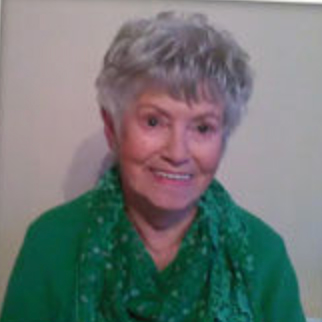
Joey Reid
Joey, aged 73, is aware of the importance and good fortune of her early diagnosis.
Having recently been diagnosed with an irregular heart rhythm, Joey Reid, aged 73, describes what living with the condition means.
Living with atrial fibrillation increases the risk of stroke by around four to five times.
You can be living with atrial fibrillation without symptoms.
The heart condition causes an irregular or abnormally fast heart rate, through abnormal electrical impulses within the atria. It affects 5% of the population at the age of 70.
“Simply taking my pulse highlighted atrial fibrillation”
Since suffering a ‘very mild stroke’ in 2011, Joey, has been involved in support group fitness classes to aid her rehabilitation. The support group classes played a huge part in early detection of the illness.
“I do exercise classes once a week where they keep an eye on my health, check my blood pressure and help me with my diet. The instructor takes my heart rate at the beginning, middle and end of class,” says Joey.
Although Joey thought her heart rate remained quite high, she didn’t worry about it. However, after taking her heart rate at the end of a class, it became clear that something was wrong.
“When the instructor took my heart rate at the end of the class, it was pumping far too fast. I sat down so they could take the reading again. They told me it was still too fast”. The instructor sent Joey straight to the GP. “The diagnosis was conclusive. I was living with atrial fibrillation”. Regular medication was prescribed.
What kind of treatments work for atrial fibrillation?
Treatment of atrial fibrillation is dependent on the individual.
Your age, health, type of atrial
It is assessed against your age, health, type of atrial fibrillation, symptoms and potential for underlying causes.
“The medication seems to be working. It makes me tired but all medication has side effects,” says Joey.
Joey is in the process of considering treatment options, including a cardioversion; a procedure that delivers an electric shock through special paddles applied to the chest walls.
“Admittedly, I’m not particularly keen on that idea, although it does work most of the time,” she said. However, as she awaits an echocriogram to determine any underlying cause for her condition she maintains the healthy lifestyle she always had.
“Finding out early has made a huge difference”
The medication and support Joey received since diagnosis has made living with atrial fibrillation as undisruptive as possible to her life and routine. “I still go out with my walking group and my dog, Mindy, and I continue my exercise classes. It’s a good quality of life,” she says.
“I was diagnosed and I’m more than happy. Sometimes people don’t know they have it and have a stroke or a heart attack as a result. Early detection was key to my quality of life – I’m very positive about that,” says Joey. It’s the hard work, support and dedication of independent support groups who have aided in Joey’s understanding of and progression with her diagnosis.
“Moving forward, it’s about doing my exercises, getting out in the fresh air and to live life as best as I can,” she says. With the treatment options and support network1 at her disposal, living with atrial fibrillation won’t stop Joey enjoying the Galway sunshine.
1 For more information about Croi’s patient support groups, click here to visit their website.

